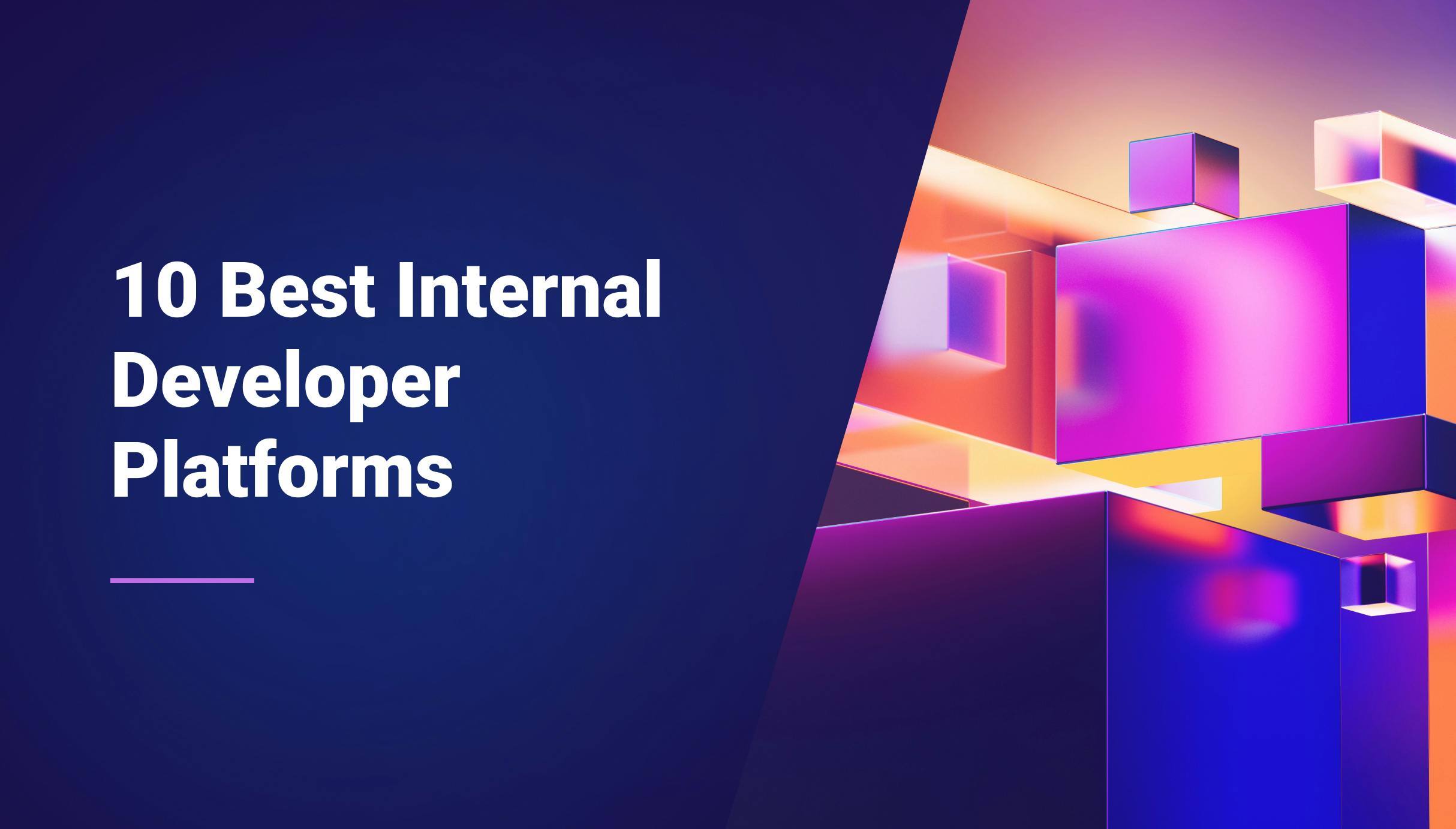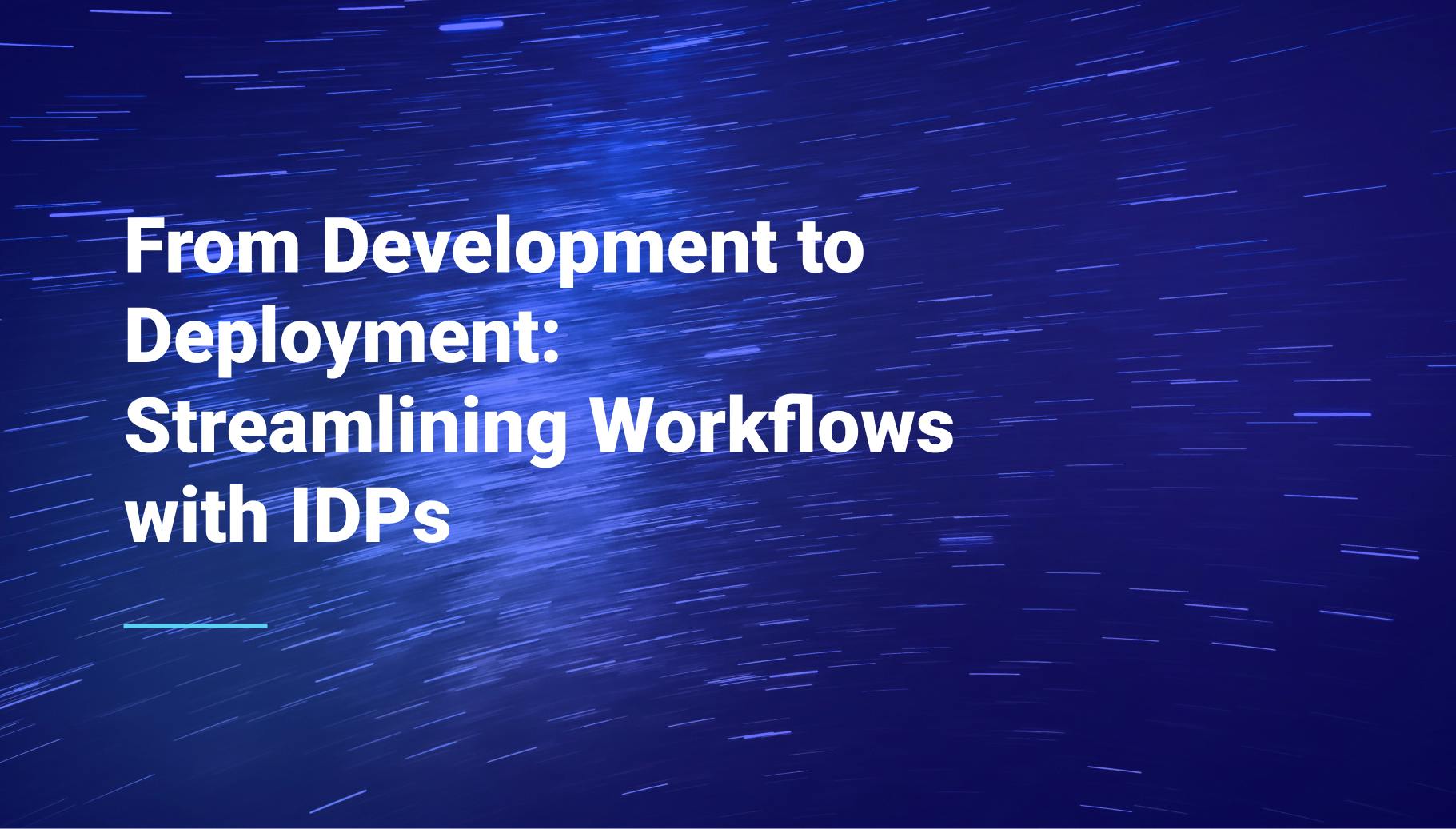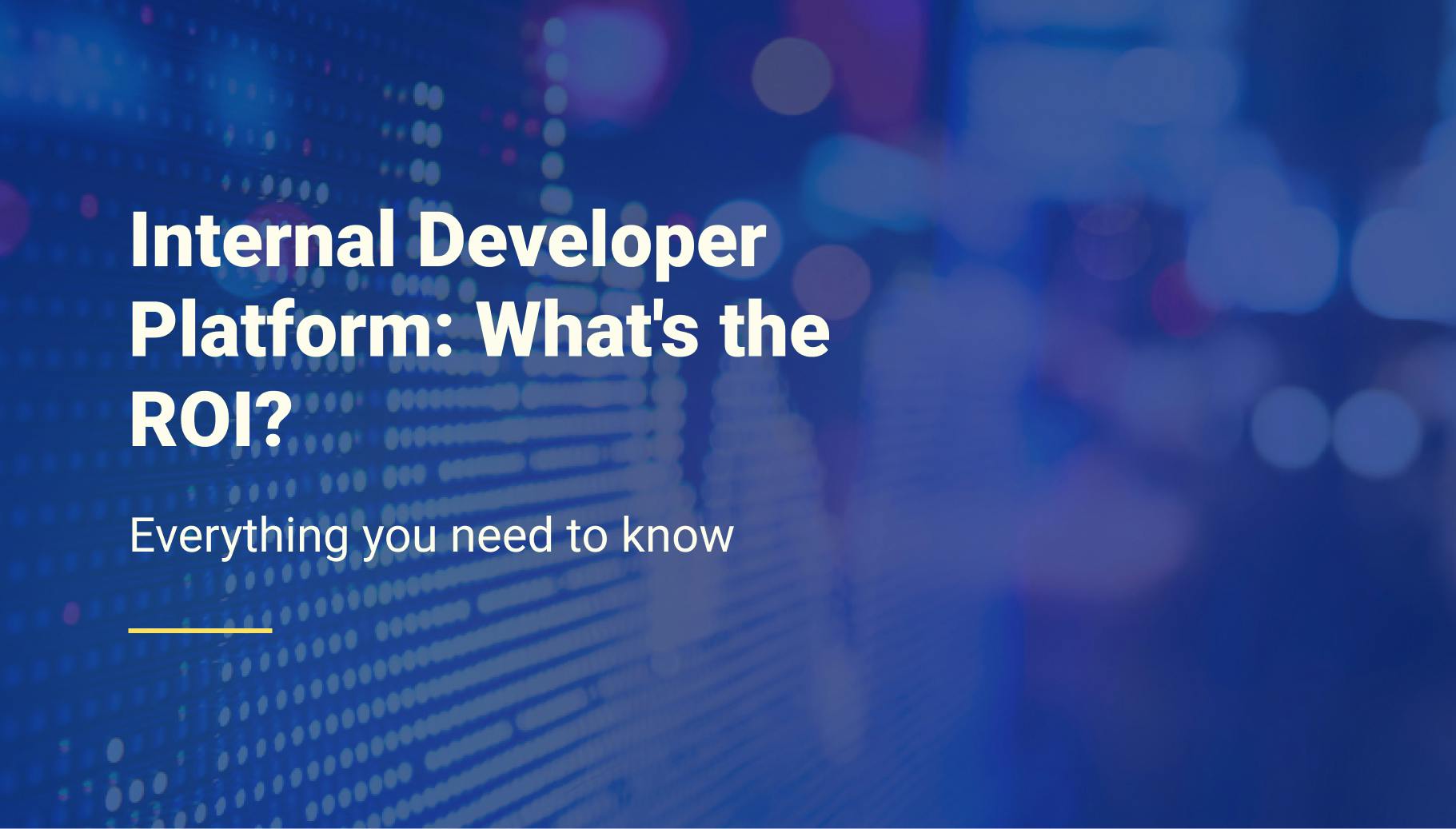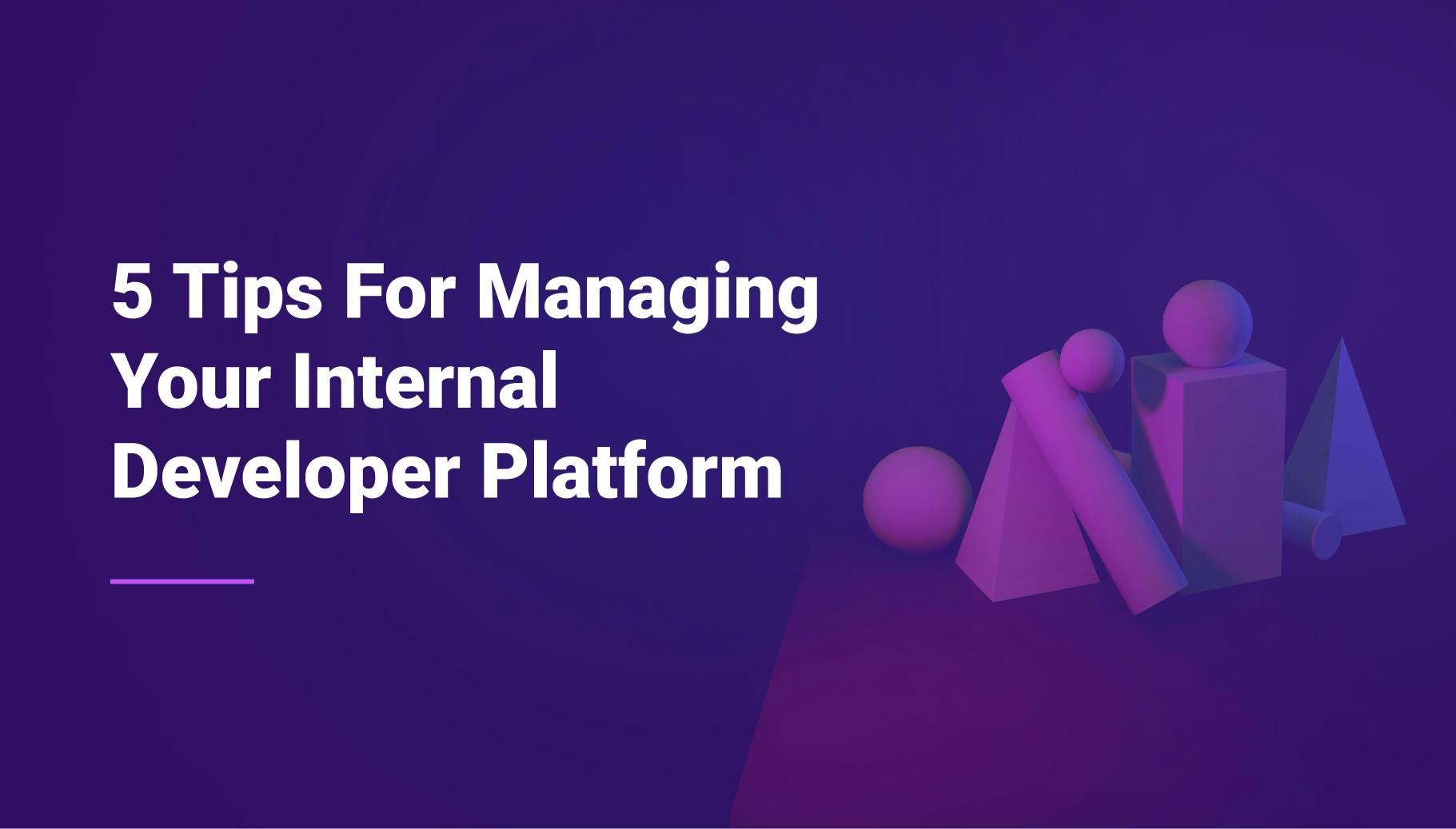Internal Developer Platform vs. Internal Developer Portal: Which to Choose?
Discover the key differences between Internal Developer Platforms (IDPs) and Internal Developer Portals and why modern engineering teams need both to streamline DevOps, boost developer productivity, and scale software delivery with confidence.

Mélanie Dallé
May 6, 2025 · 12 min read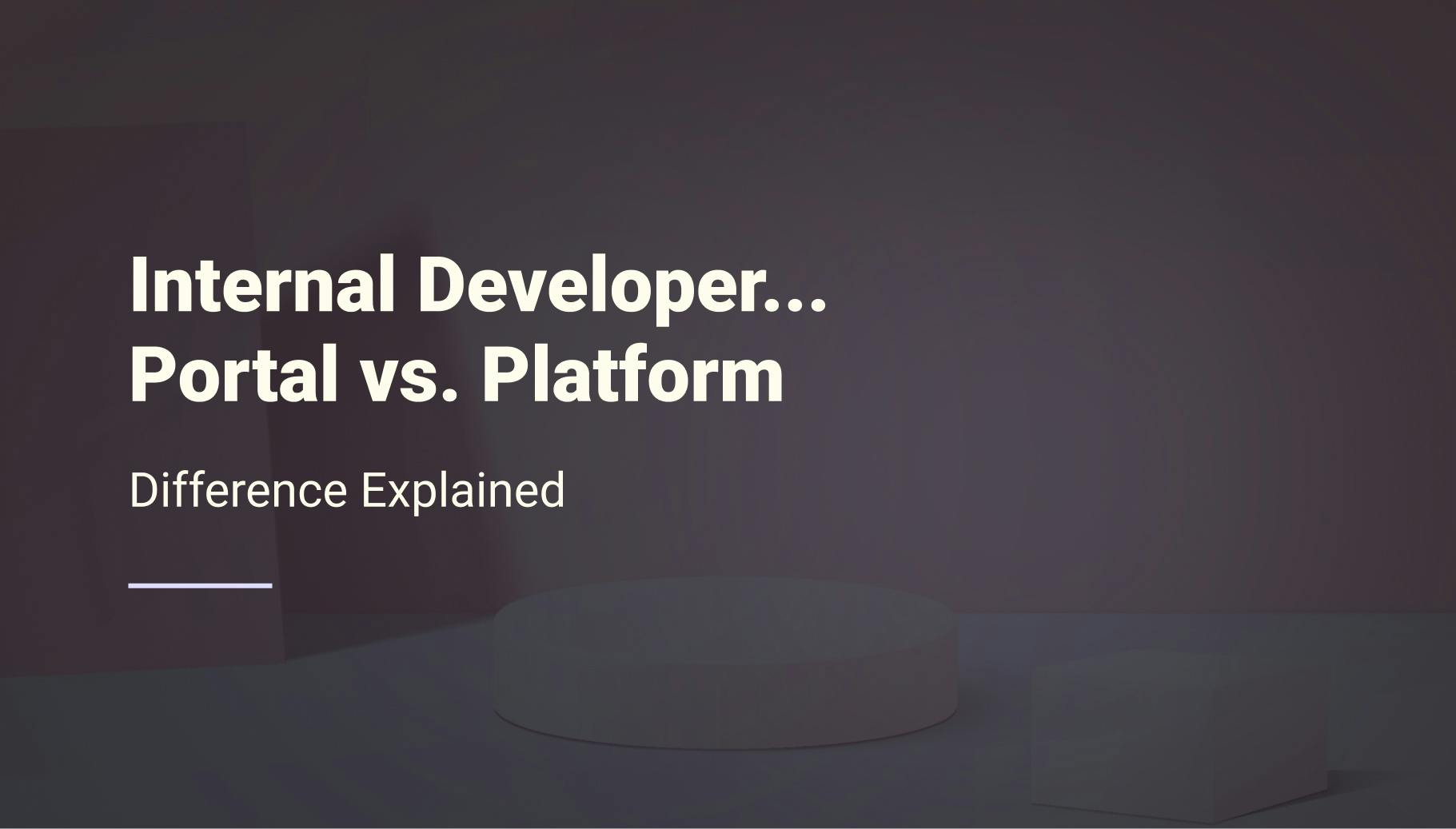
#Key Points:
- IDPs (engine) are automated infrastructure layers, abstracting complexity and standardizing workflows. They provide self-service and govern software delivery, acting as the foundational automation for scalable operations.
- Portals (dashboard) are user-centric interfaces centralizing tools, docs, and insights from the IDP. They simplify developer interaction, offering a unified hub for visibility and usability, reducing cognitive load.
- Their synergy is crucial: IDPs automate, Portals ensure usability. Together, they bridge complexity with access, enabling scalable, cost-efficient software delivery and maximizing developer productivity.
The accelerating pace of software development demands tools that simplify complexity without sacrificing agility. Engineering teams struggle with cloud-native architectures, fragmented toolchains, and pressure to deliver faster while maintaining security and compliance. This reduces developer productivity, as engineers spend more time dealing with infrastructure than writing code.
Enter Internal Developer Platforms (IDPs) and Internal Developer Portals—two distinct yet interconnected solutions designed to manage this complexity. For mid-size organizations, they offer a scalable path to improve developer experience without ballooning DevOps overhead. An IDP acts as the automated backbone of the development lifecycle, while the Portal serves as the centralized interface where developers access tools and resources. While often confused, understanding their unique roles is critical: the IDP is the engine powering self-service, and the Portal is the dashboard that makes it accessible.
Together, they reduce cognitive load, accelerate delivery, and encourage developer autonomy. Let’s explore how each improves the developer experience (DX) and why both are essential in today’s innovation-driven landscape.
#Internal Developer Platform
An Internal Developer Platform (IDP) is the foundational infrastructure layer that abstracts and automates the complexities of modern software delivery. It acts as a cohesive, opinionated toolkit that standardizes workflows across the development lifecycle—from provisioning environments and deploying code to enforcing security policies and monitoring production systems. By codifying best practices and integrating diverse tools, an IDP empowers developers to focus on writing code rather than configuring infrastructure.

#Core Characteristics of an Internal Developer Platform
#1. Infrastructure Abstraction
The IDP masks the challenges of underlying infrastructure (e.g., Kubernetes clusters, cloud providers, networking) behind simplified, declarative interfaces. For example, instead of requiring developers to write YAML manifests for Kubernetes deployments, an IDP like Qovery allows teams to define application requirements (CPU, memory, dependencies) through high-level configurations. This abstraction ensures consistency across environments while shielding developers from platform-specific details.
#2. Automation at Scale
IDPs automate repetitive tasks such as environment provisioning, CI/CD pipeline execution, and rollback mechanisms. For instance:
- Ephemeral Environments
Platforms like Qovery automatically spin up temporary, production-like environments for testing, merging, or debugging, then tear them down after use.
- Self-Healing Systems
Built-in monitoring and auto-remediation tools detect failures (e.g., pod crashes, resource exhaustion) and trigger recovery workflows without human intervention.
This automation reduces manual work, accelerates deployment frequency, and minimizes human error.
- Self-Service Capabilities
A hallmark of IDPs is enabling developer autonomy through self-service access to resources.
Developers can:
- Provision databases, message queues, or cloud services via a CLI or API.
- Deploy code to staging or production with predefined approval gates.
- Access logs, metrics, and traces without relying on DevOps teams.
Many tools exemplify this by automating cloud-native resource management so that developers can request infrastructure on-demand while adhering to governance rules.
#3. Governed Autonomy
While promoting independence, IDPs enforce guardrails to ensure compliance with organizational policies. For example:
- Security Policies: Automatically scan code for vulnerabilities, enforce role-based access control (RBAC), and encrypt sensitive data.
- Cost Controls: Limit resource quotas, auto-pause unused environments, and tag workloads for chargeback.
- Compliance Standards: Embed regulatory requirements (e.g., GDPR, HIPAA) into deployment pipelines.
This balance of freedom and control prevents "shadow IT" and ensures alignment with enterprise standards.
#4. Flexibility and Extensibility
A robust IDP is not a monolithic tool but a modular ecosystem that integrates with existing tools (e.g., Terraform, GitHub Actions, Datadog). For example:
- You can unify legacy systems and microservices into a single platform. Not only does this allow incremental adoption, but it also ensures consistency across teams and workflows
- Custom APIs enable teams to plug in niche tools while maintaining a unified workflow.
This adaptability ensures the IDP evolves alongside technological and organizational changes.
#Real-World Impact of IDPs
Organizations leveraging IDPs report measurable improvements in key metrics:
- Faster Onboarding: New hires deploy their first code change within hours, not weeks.
- Reduced Lead Time: Deployment cycles shrink from days to minutes.
- Lower Cognitive Load: Developers spend 70% less time debugging environment inconsistencies.
- Enhanced Reliability: Automated rollbacks and canary deployments cut production incidents by up to 40%.
By serving as the "paved path" to production, IDPs eliminate friction in the software lifecycle, turning infrastructure into a commodity and enabling engineering teams to scale efficiently.
Check out Qovery’s handy 10 Key Features Checklist to help you choose the right Internal Developer Platform for your team.
#Internal Developer Portal
An Internal Developer Portal is the user-centric interface that serves as the centralized hub for accessing tools, documentation, and insights provided by the underlying Internal Developer Platform. While the Platform handles infrastructure automation, the Portal focuses on simplifying developer interactions by offering a unified space to manage resources, track dependencies, and enforce workflows—all through an intuitive, product-like experience.
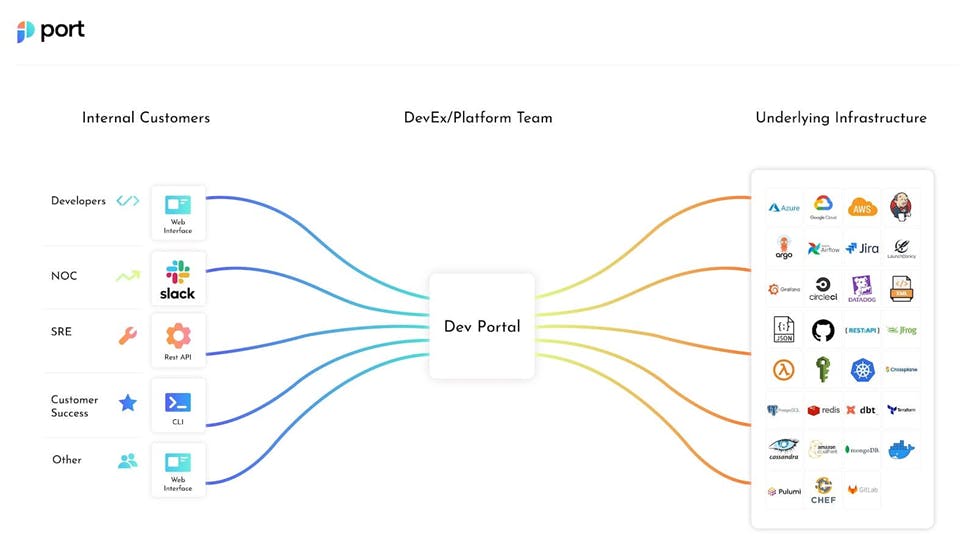
#Core Characteristics of an Internal Developer Portal
#1. Centralized Hub
The Portal aggregates disparate tools, services, and documentation into a single pane of glass.
For example:
- Service Catalog: Acts as a metadata repository, cataloging microservices, libraries, APIs, and their ownership, dependencies, and statuses. This enables teams to visualize relationships between services, track SLAs, and monitor compliance through a unified interface.
- Documentation Access: Centralizes runbooks, API specs, and architecture diagrams, reducing time spent searching across Confluence, Slack, or emails.
- Cost and Health Visibility: Dashboards display real-time metrics on application performance, cloud spend, and security vulnerabilities, which correlates data for actionable insights.
#2. User-Centric Design
Portals prioritize developer experience (DX) with interfaces modeled after consumer-grade software.
Key features include:
- Self-Service Actions: Developers can spin up environments, deploy code, or debug issues via intuitive UI/CLI workflows. Through no-code editors, they can customize dashboards and automate approval workflows.
- Personalized Views: Role-based access ensures developers see only relevant resources (e.g., frontend engineers access UI component libraries, SREs monitor production health).
- Search and Discovery: Advanced search capabilities help locate services, APIs, or documentation instantly, akin to an “internal Google” for engineering teams.
#3. Workflow Automation
Portals embed automation into daily workflows, enabling developers to:
- Trigger CI/CD Pipelines: Initiate builds, rollbacks, or canary deployments with one click.
- Manage Incident Response: Integrate with PagerDuty or Opsgenie to auto-create tickets, assign responders, and track resolutions.
- Enforce Governance: Automate PR approvals, security scans, or compliance checks through predefined rules, reducing manual oversight.
#4. API-First Extensibility
Modern Portals function as a platform API that enables seamless integration with external tools and custom extensions. For example:
- Plugins: Extend functionality with pre-built integrations for Kubernetes, GitHub, or Jenkins.
- Custom Workflows: Teams can build bespoke automation (e.g., auto-tagging resources for cost allocation) using low-code templates.
This extensibility ensures the Portal evolves with organizational needs, without risk of vendor lock-in.
By acting as the 'mission control' for developers, Internal Developer Portals transform chaos into clarity, that enables teams to ship code faster while maintaining operational rigor.
#The Relationship: How IDP and Portal Interact to Empower Developers
The Internal Developer Platform and Internal Developer Portal are symbiotic components of a modern engineering ecosystem. Think of the Platform as the engine and the Portal as the dashboard—while the former powers the underlying automation and workflows, the latter presents these capabilities in a clear and accessible manner. Together, they bridge the gap between infrastructure complexity and developer productivity.
#Interdependency in Action
Portal as the Front-End for the Platform
The Portal consumes APIs and services exposed by the Platform, translating technical capabilities into user-friendly interactions. For example:
- When a developer requests a new environment via the Portal, the Portal triggers the Platform to provision cloud resources, apply security policies, and deploy dependencies automatically.
- Real-time monitoring data is visualized in the Portal’s dashboards, which allows developers to troubleshoot without navigating CLI tools.
#Platform as the Backbone for the Portal
The Portal’s utility depends entirely on the Platform’s robustness. Without a well-architected Platform, the Portal becomes a superficial layer with limited functionality. For instance:
- A Portal’s service catalog is only valuable if the Platform provides accurate, real-time metadata about services, ownership, and dependencies.
- Self-service deployment buttons in the Portal rely on the Platform’s CI/CD pipelines to execute builds, tests, and rollbacks seamlessly.
#Key Integration Points
#1. Service Catalog ↔ Infrastructure Automation
The Portal’s service catalog (metadata) syncs with the Platform’s infrastructure state. For example, when the Platform auto-scales a microservice, the Portal updates its status, dependencies, and ownership in real time.
#2. Workflow Automation ↔ Platform APIs
Portal workflows (e.g., “Deploy to Production”) invoke Platform APIs to execute pipelines, apply governance checks, and log outcomes. Many tools use Kubernetes operators under the hood to reconcile desired states declared via the Portal.
#3. Observability ↔ Telemetry Data
The Portal aggregates logs, metrics, and traces generated by the Platform’s monitoring tools (e.g., Prometheus, Grafana) into unified dashboards.
#4. Developer Self-Service ↔ Guardrails
When a developer submits a request via the Portal (e.g., “Spin up a PostgreSQL instance”), the Platform validates it against policies (cost limits, security rules) before provisioning. This ensures autonomy without compromising governance.
#The Synergy: Why 1+1 > 2
- Streamlined Workflows: Developers no longer context-switch between tools; the Portal becomes the single entry point for all Platform capabilities.
- Unified Governance: Policies codified in the Platform (e.g., RBAC, cost controls) are automatically enforced in Portal interactions.
- Faster Feedback Loops: Portal-driven insights (e.g., “Service X is over budget”) trigger Platform actions (e.g., auto-scaling, resource cleanup).
- Cultural Shift: The Portal gives developers direct Platform access, minimizes DevOps bottlenecks, and reinforces product thinking.
#Why Both Are Essential: Bridging Automation with Usability
In the quest to optimize developer productivity and operational efficiency, organizations often face a false dichotomy: automation versus usability. However, Internal Developer Platforms (IDPs) and Internal Developer Portals are not competing solutions—they are complementary forces. The IDP lays the technical foundation for standardized, automated workflows, while the Portal ensures these capabilities are accessible and actionable for developers. Together, they address both systemic and human-centric challenges in software delivery.
#The IDP: Enforcing Efficiency and Governance
The Internal Developer Platform excels at eliminating manual tasks and enforcing consistency across the development lifecycle. Its value lies in:
- Automated Infrastructure Management: By abstracting cloud complexity (e.g., Kubernetes, AWS) into declarative workflows, IDPs like Qovery enable developers to deploy applications with a single command, regardless of the underlying infrastructure.
- Scalable Self-Service: Many tools automate resource provisioning so developers can spin up databases or APIs on-demand while they adhere to security policies.
- Governed Autonomy: IDPs embed safeguards into pipelines, such as automated security scans (e.g., vulnerability detection in CI/CD) and cost controls (e.g., auto-pausing unused environments).
Lacking an IDP leads to workflow fragmentation, environment mismatches, and uncontrolled shadow IT, which creates technical debt and compliance gaps.
#The Portal: Democratizing Access and Insight
While the IDP powers the machinery, the Portal ensures developers can use it effectively. Its strengths include:
- Unified Interface: Through portals, you can consolidate tools, documentation, and services into a single hub, eliminating context-switching between Slack, Jira, and CLI terminals.
- Actionable Visibility: Dashboards show real-time metrics about application health, ownership, and cloud costs so developers can make data-driven decisions.
- Reduced Cognitive Load: When Portals centralize runbooks, API specs, and service catalogs, they break the 'tribal knowledge' bottleneck so teams can onboard faster and collaborate better.
Without a Portal, even the most robust IDP risks underutilization, since developers face a maze of disconnected tools and confusing workflows.
#Synergy in Action: Closing the Feedback Loop
The true power of IDP and Portal lies in their interplay:
- Accelerated Incident Response: When the Portal flags a production outage (via integrated monitoring tools), the IDP auto-triggers rollbacks or scales resources to resolve it.
- Cost Optimization: The Portal’s cost dashboards flag overspending, which leads developers to use the IDP’s self-service tools to rightsize resources.
- Streamlined Onboarding: New hires use the Portal to discover services and documentation, then leverage the IDP’s paved paths to deploy code within hours.
#The Cost of Choosing One Over the Other
- IDP Alone: Risk of low adoption due to steep learning curves and fragmented visibility. Developers may revert to manual processes, undermining automation gains.
- Portal Alone: Superficial fixes without addressing underlying inefficiencies. Teams gain visibility but lack automated tools to act on insights, leading to "analysis paralysis."
#Scalability, Complexity & Cost: Balancing Growth with Efficiency
As engineering teams grow, they deal with three key challenges: handling scattered infrastructure, reducing operational complexity, and managing costs. Internal Developer Platforms (IDPs) and Portals solve these problems together by balancing automation, visibility, and governance
#1. Scaling Infrastructure and Applications with IDPs
IDPs are engineered to handle growth by automating resource management and standardizing workflows:
- Elastic Infrastructure:
IDPs like Qovery abstract cloud provider APIs, enabling dynamic provisioning of resources (e.g., Kubernetes clusters, serverless functions) based on demand. For instance, auto-scaling rules in the IDP can spin up additional pods during traffic spikes and scale them down during off-peak hours, optimizing resource utilization. - Ephemeral Environments:
By automating the creation and teardown of temporary environments (e.g., for testing, debugging), IDPs eliminate bottlenecks in pre-production pipelines. A gaming company using Qovery reduced environment provisioning time from 45 minutes to 2 seconds, supporting 100+ concurrent feature branches. - Multi-Cloud and Hybrid Cloud:
IDPs combine different environments (AWS, Azure, on-prem) through one API layer, which lets developers deploy applications across platforms without code changes. As a result, organizations avoid vendor lock-in and scale globally with ease. - Self-Healing Systems:
Built-in observability and auto-remediation (e.g., restarting failed containers, rerouting traffic) minimize downtime. For example, an e-commerce platform using an IDP reduced incident resolution time by 60% through automated rollbacks.
#2. Simplifying Complexity with Portals
As systems grow, complexity becomes a silent productivity killer. Portals combat this by acting as a "single source of truth":
Service Catalogs:
Portals map dependencies between microservices, APIs, and databases, answering critical questions like:
- Who owns this service?
- What downstream systems will break if I update this API?
- Is this service compliant with GDPR?
Unified Observability:
Portals aggregate logs (ELK), metrics (Prometheus), and traces (Jaeger) into role-specific dashboards. For example, SREs monitor error rates, while developers track build times—all within the same interface.
Centralized Documentation:
By housing runbooks, API specs, and architecture diagrams in the Portal, teams reduce reliance on tribal knowledge. For example, one SaaS startup cut onboarding time from 3 weeks to 3 days by integrating technical documentation directly into their developer portal.
Workflow Standardization:
Portals enforce consistent processes for deployments, incident management, and approvals. For example, a fintech company built SOC 2 compliance checks into its Portal’s deployment workflow, which cut audit preparation time by 70%.
#3. Cost Efficiency: The ROI of IDPs and Portals
While both tools require upfront investment, their long-term financial impact is significant:
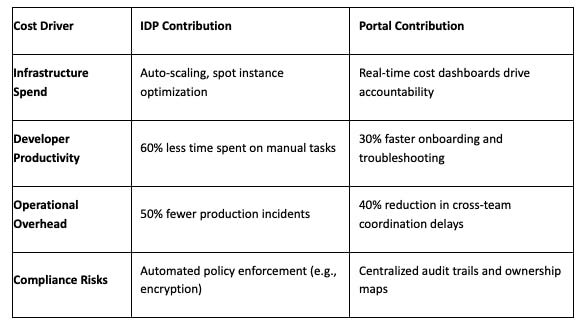
#The Strategic Balance
- IDPs excel at horizontal scaling (managing more resources, users, services) through automation.
- Portals excel at vertical scaling (managing complexity per developer) through centralized insights.
Together, they create a flywheel:
- IDP Automation minimizes manual work so teams can manage larger workloads.
- Portal Analytics expose inefficiencies, which drives teams to optimize through the IDP.
- Continuous Feedback between the two ensures sustainable growth without technical debt explosions.
#Key Differences at a Glance:
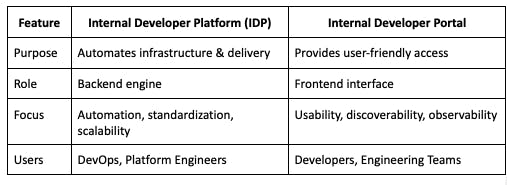
#Conclusion
Internal Developer Platforms (IDPs) and Portals are complementary pillars of modern engineering. The IDP automates infrastructure, scales systems, and enforces governance, while the Portal centralizes observability, simplifies workflows, and empowers developers. Together, they transform complexity into clarity, enabling teams to ship faster, optimize costs, and maintain agility. Investing in both isn’t optional—it’s the blueprint for sustainable, future-ready software delivery.
Looking for an Internal Developer Platform that truly fits your needs? This top 10 list of IDPs from Qovery helps you make the right choice.
Your Favorite DevOps Automation Platform
Qovery is a DevOps Automation Platform Helping 200+ Organizations To Ship Faster and Eliminate DevOps Hiring Needs,
Try it out now!

Your Favorite DevOps Automation Platform
Qovery is a DevOps Automation Platform Helping 200+ Organizations To Ship Faster and Eliminate DevOps Hiring Needs,
Try it out now!
